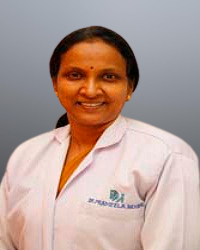Search Result: 9

Dr Jasmin Rath
MBBS; MD (Obstetrics & Gynecology) Specialist in High Risk Pregnancy and Laproscopy,Trained in Laproscopy,Infertility & USG WHI intiative Laproscopy Training
Registration No
524868
Language
English, हिंदी, ଓଡ଼ିଆ, తెలుగు

10 years experience overall

Jubileehills & kondapur , Hyderabad
MON- SAT, MON- SAT(12:15 PM-03:45 PM)

Dr Prameela Sekhar
MBBS,DGO,DNB
Registration No
45063
Language
English, हिंदी, తెలుగు

28 years experience overall

Jubileehills & Jubileehills & kondapur , Hyderabad
MON- SAT, MON- SAT(01:30 PM-02:30 PM)

Dr Sudha Madhuri
MBBS,DGO,MRCOG
Registration No
765400
Language
English, हिंदी, తెలుగు

15 years experience overall

kondapur , Hyderabad
MON- WED, FRI, SAT(10:30 AM-01:30 PM)

Dr Suneetha Gudipati
MBBS, MD, OBG, OSM, MRCOG (UK)
Registration No
81172
Language
English, हिंदी, తెలుగు

15 years experience overall

kondapur , Hyderabad
TUE(01:30 PM-03:00 PM)

Dr Vimee Bindra Basu
MBBS, MS(Obs& Gynecology), MHA, FICOG
Registration No
505892
Language
English, বাংলা, हिंदी, ਪੰਜਾਬੀ, తెలుగు

11 years experience overall

Jubileehills , Hyderabad
MON- SAT, MON- SAT(10:00 AM-02:00 PM)

Dr Madhavi Latha Munagapathy
MBBS, DGO, DNB
Registration No
594180
Language
English, हिंदी, తెలుగు

11 years experience overall

Madeenaguda , Hyderabad
MON- SAT(10:30 AM-12:00 PM)

Dr Neeraja Valli
MS OBG
Registration No
2915506
Language
English, हिंदी, తెలుగు

11 years experience overall

Jubilee Hills , Hyderabad
MON- SAT(11:00 AM-02:00 PM)

Dr Pavan Kumar
DNB ( Obstetrics and Gynaecology )
Registration No
2915492
Language
English, हिंदी, తెలుగు

7 years experience overall

Jubilee Hills , Hyderabad
MON- SAT(09:00 AM-10:00 AM, 02:00 PM-03:00 PM)

Dr Tayi Yamuna
MBBS, MD, D.G.O (Obstetrics & Gynaecology)
Registration No
539359
Language
English, हिंदी, తెలుగు

39 years experience overall

A S Rao Nagar , Hyderabad
MON, TUE | WED | THU- SAT(11:30 AM-11:40 AM, 11:45 AM-01:00 PM | 11:30 AM-11:50 AM, 12:00 PM-01:00 PM | 11:30 AM-11:40 AM, 11:45 AM-01:00 PM)
Frequently Asked Questions for Hysteroscopic Myomectomy in Hyderabad
Yes, hysteroscopic myomectomy can improve fertility in women who have experienced infertility due to fibroids. After the procedure, it is possible to conceive naturally or with assisted reproductive techniques. However, every case is unique, and your doctor will provide guidance based on your circumstances.
Hysteroscopic myomectomy is most effective for removing small to medium-sized fibroids located within the uterine cavity. Large or deeply embedded fibroids may require alternative surgical approaches.
Women with small to medium-sized fibroids located within the uterine cavity are suitable candidates for hysteroscopic myomectomy. However, each case is unique, and your doctor will evaluate your specific situation to determine if this procedure is appropriate for you.
Although rare, potential risks of hysteroscopic myomectomy include infection, bleeding, injury to the uterus or surrounding structures, and complications related to anaesthesia. Your doctor will discuss these risks with you before the procedure and take necessary precautions to minimise them.
Hysteroscopic myomectomy is generally well-tolerated, and most women experience minimal discomfort. Local anaesthesia or sedation is usually used during the procedure to minimise pain. Your doctor will also prescribe medications as needed for post-operative pain management.
No, it is a minimally invasive procedure that is typically performed on an outpatient basis, which means you can go home on the same day.
Eligibility for hysteroscopic myomectomy depends on various factors such as the size, number, and location of your fibroids, as well as your overall health condition and desire for future pregnancies. Your doctor will assess these factors to determine if you are a suitable candidate for the procedure.
Many reputable hospitals offer hysteroscopic myomectomy procedures. It is best to choose a hospital that has experienced gynaecologists specialising in minimally invasive gynaecological surgeries and provides comprehensive post-operative care.
The duration of a hysteroscopic myomectomy depends on the number, size, and location of the fibroids. On average, the procedure can take between 30 minutes and an hour. Your doctor will provide a more accurate estimate based on your specific case.
After a hysteroscopic myomectomy procedure, you may experience mild cramping and vaginal bleeding. Your doctor will provide specific instructions for pain management, hygiene practices, and resuming daily activities and schedule follow-up visits to monitor your recovery.
Preparation for the procedure may include a preoperative evaluation, blood tests, and imaging scans. Your doctor may also recommend medications or instructions to follow before undergoing hysteroscopic myomectomy, such as fasting or avoiding certain medications.
The recovery time for hysteroscopic myomectomy is usually shorter than traditional open surgery. Most women can resume their normal activities within a couple of days. However, it may take three to four weeks for complete recovery.
Yes, hysteroscopic myomectomy can improve fertility in women who have experienced infertility due to fibroids. After the procedure, it is possible to conceive naturally or with assisted reproductive techniques. However, every case is unique, and your doctor will provide guidance based on your circumstances.
Hysteroscopic myomectomy is most effective for removing small to medium-sized fibroids located within the uterine cavity. Large or deeply embedded fibroids may require alternative surgical approaches.
Women with small to medium-sized fibroids located within the uterine cavity are suitable candidates for hysteroscopic myomectomy. However, each case is unique, and your doctor will evaluate your specific situation to determine if this procedure is appropriate for you.
Although rare, potential risks of hysteroscopic myomectomy include infection, bleeding, injury to the uterus or surrounding structures, and complications related to anaesthesia. Your doctor will discuss these risks with you before the procedure and take necessary precautions to minimise them.
Hysteroscopic myomectomy is generally well-tolerated, and most women experience minimal discomfort. Local anaesthesia or sedation is usually used during the procedure to minimise pain. Your doctor will also prescribe medications as needed for post-operative pain management.
No, it is a minimally invasive procedure that is typically performed on an outpatient basis, which means you can go home on the same day.
Eligibility for hysteroscopic myomectomy depends on various factors such as the size, number, and location of your fibroids, as well as your overall health condition and desire for future pregnancies. Your doctor will assess these factors to determine if you are a suitable candidate for the procedure.
Many reputable hospitals offer hysteroscopic myomectomy procedures. It is best to choose a hospital that has experienced gynaecologists specialising in minimally invasive gynaecological surgeries and provides comprehensive post-operative care.
The duration of a hysteroscopic myomectomy depends on the number, size, and location of the fibroids. On average, the procedure can take between 30 minutes and an hour. Your doctor will provide a more accurate estimate based on your specific case.
After a hysteroscopic myomectomy procedure, you may experience mild cramping and vaginal bleeding. Your doctor will provide specific instructions for pain management, hygiene practices, and resuming daily activities and schedule follow-up visits to monitor your recovery.
Preparation for the procedure may include a preoperative evaluation, blood tests, and imaging scans. Your doctor may also recommend medications or instructions to follow before undergoing hysteroscopic myomectomy, such as fasting or avoiding certain medications.
The recovery time for hysteroscopic myomectomy is usually shorter than traditional open surgery. Most women can resume their normal activities within a couple of days. However, it may take three to four weeks for complete recovery.
Yes, hysteroscopic myomectomy can improve fertility in women who have experienced infertility due to fibroids. After the procedure, it is possible to conceive naturally or with assisted reproductive techniques. However, every case is unique, and your doctor will provide guidance based on your circumstances.
Hysteroscopic myomectomy is most effective for removing small to medium-sized fibroids located within the uterine cavity. Large or deeply embedded fibroids may require alternative surgical approaches.
Women with small to medium-sized fibroids located within the uterine cavity are suitable candidates for hysteroscopic myomectomy. However, each case is unique, and your doctor will evaluate your specific situation to determine if this procedure is appropriate for you.
Hysteroscopic myomectomy is generally well-tolerated, and most women experience minimal discomfort. Local anaesthesia or sedation is usually used during the procedure to minimise pain. Your doctor will also prescribe medications as needed for post-operative pain management.
Although rare, potential risks of hysteroscopic myomectomy include infection, bleeding, injury to the uterus or surrounding structures, and complications related to anaesthesia. Your doctor will discuss these risks with you before the procedure and take necessary precautions to minimise them.
No, it is a minimally invasive procedure that is typically performed on an outpatient basis, which means you can go home on the same day.
Eligibility for hysteroscopic myomectomy depends on various factors such as the size, number, and location of your fibroids, as well as your overall health condition and desire for future pregnancies. Your doctor will assess these factors to determine if you are a suitable candidate for the procedure.
Many reputable hospitals offer hysteroscopic myomectomy procedures. It is best to choose a hospital that has experienced gynaecologists specialising in minimally invasive gynaecological surgeries and provides comprehensive post-operative care.
The duration of a hysteroscopic myomectomy depends on the number, size, and location of the fibroids. On average, the procedure can take between 30 minutes and an hour. Your doctor will provide a more accurate estimate based on your specific case.
After a hysteroscopic myomectomy procedure, you may experience mild cramping and vaginal bleeding. Your doctor will provide specific instructions for pain management, hygiene practices, and resuming daily activities and schedule follow-up visits to monitor your recovery.
Preparation for the procedure may include a preoperative evaluation, blood tests, and imaging scans. Your doctor may also recommend medications or instructions to follow before undergoing hysteroscopic myomectomy, such as fasting or avoiding certain medications.
The recovery time for hysteroscopic myomectomy is usually shorter than traditional open surgery. Most women can resume their normal activities within a couple of days. However, it may take three to four weeks for complete recovery.
The success rate of hysteroscopic myomectomy varies depending on factors such as the size and location of the fibroids. Overall, it has a high success rate with minimal complications. Your doctor can provide more specific information based on your case.
You can ask for recommendations from your primary care physician or gynaecologist. You can also check online reviews, consult medical directories, or contact reputable hospitals that specialise in gynaecological surgeries.
A gynaecologist with expertise in minimally invasive gynaecological surgery, specifically hysteroscopy and myomectomy procedures, performs hysteroscopic myomectomy. This ensures proper technique and reduces the risk of complications.
A doctor who performs hysteroscopic myomectomy should have experience and expertise in hysteroscopy and myomectomy procedures. Moreover, they should have specialised training in minimally invasive gynaecological surgery.
Hysteroscopic myomectomy is a minimally invasive surgical procedure used to remove fibroids (non-cancerous growths) from the uterus. It involves inserting a thin, lighted tube called a hysteroscope through the vagina and cervix to reach the uterus and remove the fibroids.
Yes, hysteroscopic myomectomy can improve fertility in women who have experienced infertility due to fibroids. After the procedure, it is possible to conceive naturally or with assisted reproductive techniques. However, every case is unique, and your doctor will provide guidance based on your circumstances.
Hysteroscopic myomectomy is most effective for removing small to medium-sized fibroids located within the uterine cavity. Large or deeply embedded fibroids may require alternative surgical approaches.
Women with small to medium-sized fibroids located within the uterine cavity are suitable candidates for hysteroscopic myomectomy. However, each case is unique, and your doctor will evaluate your specific situation to determine if this procedure is appropriate for you.
Although rare, potential risks of hysteroscopic myomectomy include infection, bleeding, injury to the uterus or surrounding structures, and complications related to anaesthesia. Your doctor will discuss these risks with you before the procedure and take necessary precautions to minimise them.
Hysteroscopic myomectomy is generally well-tolerated, and most women experience minimal discomfort. Local anaesthesia or sedation is usually used during the procedure to minimise pain. Your doctor will also prescribe medications as needed for post-operative pain management.
No, it is a minimally invasive procedure that is typically performed on an outpatient basis, which means you can go home on the same day.
Eligibility for hysteroscopic myomectomy depends on various factors such as the size, number, and location of your fibroids, as well as your overall health condition and desire for future pregnancies. Your doctor will assess these factors to determine if you are a suitable candidate for the procedure.
Many reputable hospitals offer hysteroscopic myomectomy procedures. It is best to choose a hospital that has experienced gynaecologists specialising in minimally invasive gynaecological surgeries and provides comprehensive post-operative care.
The duration of a hysteroscopic myomectomy depends on the number, size, and location of the fibroids. On average, the procedure can take between 30 minutes and an hour. Your doctor will provide a more accurate estimate based on your specific case.
After a hysteroscopic myomectomy procedure, you may experience mild cramping and vaginal bleeding. Your doctor will provide specific instructions for pain management, hygiene practices, and resuming daily activities and schedule follow-up visits to monitor your recovery.
Preparation for the procedure may include a preoperative evaluation, blood tests, and imaging scans. Your doctor may also recommend medications or instructions to follow before undergoing hysteroscopic myomectomy, such as fasting or avoiding certain medications.
The recovery time for hysteroscopic myomectomy is usually shorter than traditional open surgery. Most women can resume their normal activities within a couple of days. However, it may take three to four weeks for complete recovery.
The success rate of hysteroscopic myomectomy varies depending on factors such as the size and location of the fibroids. Overall, it has a high success rate with minimal complications. Your doctor can provide more specific information based on your case.
You can ask for recommendations from your primary care physician or gynaecologist. You can also check online reviews, consult medical directories, or contact reputable hospitals that specialise in gynaecological surgeries.
A gynaecologist with expertise in minimally invasive gynaecological surgery, specifically hysteroscopy and myomectomy procedures, performs hysteroscopic myomectomy. This ensures proper technique and reduces the risk of complications.
Hysteroscopic myomectomy is a minimally invasive surgical procedure used to remove fibroids (non-cancerous growths) from the uterus. It involves inserting a thin, lighted tube called a hysteroscope through the vagina and cervix to reach the uterus and remove the fibroids.
A doctor who performs hysteroscopic myomectomy should have experience and expertise in hysteroscopy and myomectomy procedures. Moreover, they should have specialised training in minimally invasive gynaecological surgery.
Related Procedures in Hyderabad
- Doctors for Hysterectomy in Hyderabad
- Doctors for Mastectomy in Hyderabad
- Doctors for C-section in Hyderabad
- Doctors for Medical abortion in Hyderabad
- Doctors for Myomectomy in Hyderabad
- Doctors for Adhesiolysis in Hyderabad
- Doctors for Hysteroscopic Polypectomy in Hyderabad
- Doctors for Diagnostic Laproscopy in Hyderabad
- Doctors for Fibroid Removal in Hyderabad
- Doctors for Laparoscopic Assisted Vaginal Hysterectomy in Hyderabad
- Doctors for Removing Uterine Polyps in Hyderabad
- Doctors for Total Laparoscopic Hysterectomy in Hyderabad
- Doctors for Diagnostic Hysteroscopy in Hyderabad
- Doctors for Ovarian Cyst Removal in Hyderabad
- Doctors for Hysteroscopic Myomectomy in Hyderabad
- Doctors for Tubal Ligation in Hyderabad
- Doctors for Breast Surgery in Hyderabad
Related Treatments in Hyderabad
- Doctors for Ectopic Pregnancy Treatment in Hyderabad
- Doctors for Endometriosis Treatment in Hyderabad
- Doctors for Hirsutism Treatment in Hyderabad
- Doctors for Lichen Planus Treatment in Hyderabad
- Doctors for Menopause Treatment in Hyderabad
- Doctors for Polycystic Ovary Syndrome Treatment in Hyderabad
- Doctors for Sexually Transmitted Diseases Treatment in Hyderabad
- Doctors for Urinary Incontinence Treatment in Hyderabad
- Doctors for Uterine Fibroids Treatment in Hyderabad
- Doctors for Uterine Prolapse Treatment in Hyderabad
- Doctors for Vaginitis Treatment in Hyderabad
Other Specialities in Hyderabad
- Best Urologist in Hyderabad
- Best Pulmonologist in Hyderabad
- Best General Physician in Hyderabad
- Best Endocrinologist in Hyderabad
- Best Cardiologist in Hyderabad
- Best Oncologist in Hyderabad
- Best Radiologist in Hyderabad
- Best Orthopedics in Hyderabad
- Best Hepatologist in Hyderabad
- Best Gynecologist in Hyderabad
- Best Dermatologist in Hyderabad
- Best Gastroenterologist in Hyderabad
- Best Psychologist in Hyderabad
- Best Ent Specialist in Hyderabad
- Best Nephrologist in Hyderabad
- Best Rheumatologist in Hyderabad
- Best Diabetologist in Hyderabad
- Best Psychiatrist in Hyderabad
- Best Neonatologist in Hyderabad
- Best Dentist in Hyderabad
- Best Dietitian in Hyderabad
- Best Haematologist in Hyderabad
- Best Pediatrics in Hyderabad
- Best General Surgeon in Hyderabad
Top Hospitals in India
- Hospitals in Ahmedabad
- Hospitals in Bangalore
- Hospitals in Bhubaneswar
- Hospitals in Bilaspur
- Hospitals in Chennai
- Hospitals in Delhi
- Hospitals in Guwahati
- Hospitals in Hyderabad
- Hospitals in Indore
- Hospitals in Kolkata
- Hospitals in Madurai
- Hospitals in Mumbai
- Hospitals in Mysore
- Hospitals in Nashik
- Hospitals in Noida
- Hospitals in Visakhapatnam
- Hospitals in Lucknow
- Hospitals in Bhopal
- Hospitals in Karur
- Hospitals in Kochi
- Hospitals in Nellore
- Hospitals in Trichy
- Hospitals in Kakinada
© Copyright 2024. Apollo Hospitals Group. All Rights Reserved.
 +91 8069991061
Book Appointment
+91 8069991061
Book Appointment






 Call Now
Call Now









